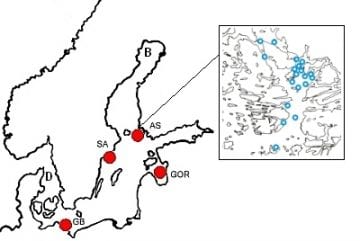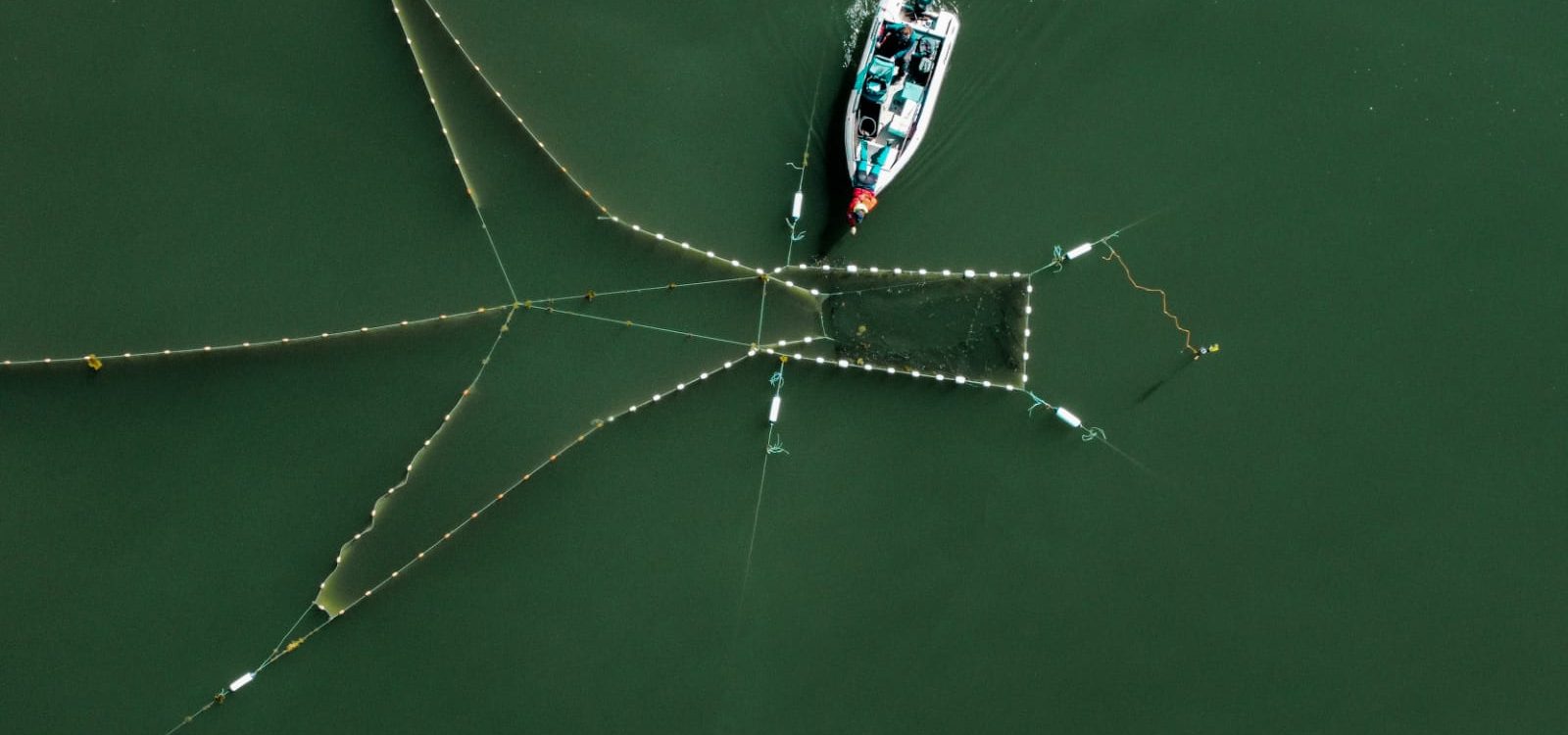Spawning areas
Baltic herring spawning behavior
Baltic herring (Clupea harengus membras) mainly spawn in spring, but the timing varies across the Baltic Sea. In the southern Baltic, spawning begins as early as late February and continues until early May. In the Archipelago Sea, spawning usually starts in early May and can extend into July or even August. Each individual herring releases its eggs at once, but the extended spawning period is likely due to variations in maturation rates within the stock.
Where spawning occurs
Baltic herring spawn along the coastal zones of the Baltic Sea, from the eastern Danish sounds to the northern parts of the Bothnian Bay. Notable spawning grounds include:
- Greifswald Bay
- Gulf of Riga
- Stockholm Archipelago
- Archipelago Sea (southwestern Finland)
Recent studies have shown that while herring can spawn across diverse habitats, they display a preference for specific, historically favored sites. This selective behavior, observed over decades in the Airisto Inlet, suggests that herring use consistent spawning locations each year, possibly due to evolved reproductive strategies.

Spawning conditions
Herring typically spawn in shallow waters (0-10 meters) among aquatic vegetation. The presence of submerged plants is essential as herring eggs attach to these surfaces and remain there until hatching. Although herring are not highly selective about the specific plant species, vegetation cover is a critical factor for successful egg attachment.
Research has shown that increased eutrophication and sediment load reduce underwater light availability, leading to a decline in submerged vegetation. This habitat degradation poses a significant risk to herring recruitment by shrinking the available spawning areas.
Challenges in spawning grounds
Degradation of coastal habitats due to eutrophication and pollution has significantly reduced the quality of spawning areas. Light limitation caused by algal blooms and sediment load leads to a loss of submerged vegetation, forcing herring to spawn in less optimal habitats. This shift results in higher egg mortality, as observed in the Airisto Inlet, where increased eutrophication and pollutants have negatively impacted egg survival.
Recent Concern:
Diving surveys have reported a worrying trend of detached eggs drifting away from their spawning substrates before hatching. Detached eggs stop developing and are often lost to wave action and currents, posing a significant threat to herring reproduction.
Evolutionary spawning behavior
Herring have evolved selective spawning behaviors to maximize reproductive success. However, due to modern environmental changes, many traditional spawning grounds have become less favorable. This forces herring to use suboptimal sites, leading to increased egg mortality and lower recruitment rates.
Our studies since the 1980s indicate that herring consistently return to specific spawning sites, despite environmental degradation. This behavior suggests a strong site fidelity, likely driven by evolutionary advantages that these locations once provided.
Related Publications
- Kääriä, J., Rajasilta, M., Kurkilahti, M., & Soikkeli, M. (1997). Spawning bed selection by the Baltic herring in the Archipelago Sea. ICES Journal of Marine Science, 54: 917-923.
- Rajasilta, M., Eklund, J., Hänninen, J., Kurkilahti, M., Kääriä, J., Rannikko, P., & Soikkeli, M. (1993). Spawning of herring in the Archipelago Sea. ICES Journal of Marine Science, 50: 233-246.
- Rajasilta, M., Eklund, J., Kääriä, J., & Ranta-aho, K. (1989). The deposition and mortality of herring eggs on different substrates in the southwest archipelago of Finland. Journal of Fish Biology, 34: 417-427.
- Vahteri, P. & Vuorinen, I. (2001). The crash in Baltic herring reproduction: A case study in the northern Airisto spawning grounds, Archipelago Sea, SW Finland. Baltic Sea Science Congress, Abstract Volume.
- Griffin, F.J., Pillai, M.C., Vines, C.A., Kääriä, J., et al. (1998). Effects of salinity on sperm motility, fertilization, and development in Pacific herring. Biological Bulletin, 194: 25-35.

